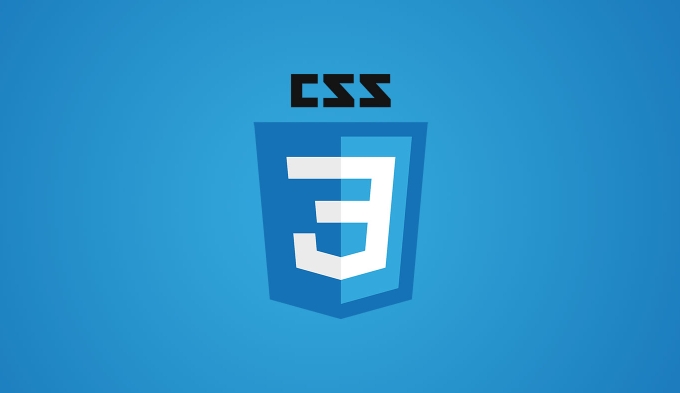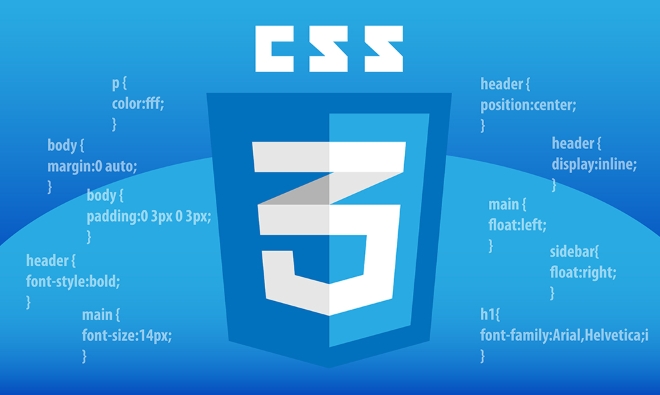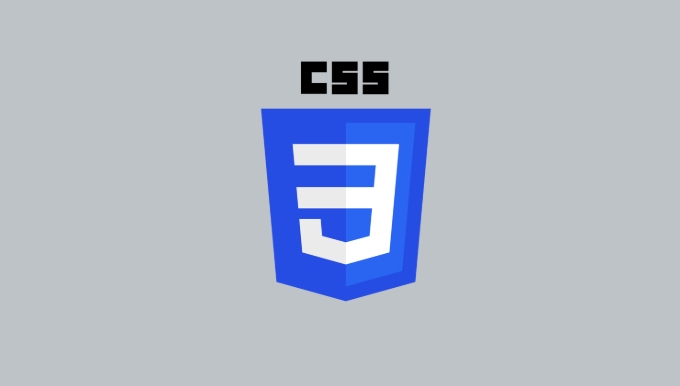z-index only works on positioned elements and is affected by stacking contexts. To use it effectively: 1. Apply position: relative, absolute, fixed, or sticky before z-index; 2. Understand that z-index operates within stacking contexts, which are created by properties like z-index itself, opacity, transform, and others; 3. Start with low z-index values and increase as needed; 4. Keep related elements in the same parent container; 5. Use browser developer tools to inspect stacking order; 6. Avoid unnecessary stacking contexts unless required; 7. Organize CSS with comments or naming conventions for clarity.

z-index controls the stacking order of positioned elements. If two elements overlap, the one with a higher z-index value will appear on top. But it only works on elements that have a position value other than static — like relative, absolute, fixed, or sticky.

Here’s what you need to know about how it actually behaves in real use.
How Positioning Affects z-index
Before z-index does anything, the element must be positioned. That means setting position: relative, absolute, fixed, or sticky. If you set z-index on a static element (the default), it won’t do anything.

For example:
.box {
position: relative;
z-index: 10;
}This .box will respect the z-index because it's positioned. But if you forget the position property, the z-index is ignored.

So always pair them together:
- Use
positionto take the element out of normal document flow - Then use
z-indexto control its layer
Stacking Contexts Matter More Than You Think
One thing many developers miss early on is that z-index doesn’t work globally. It only affects elements within the same stacking context.
A stacking context is created when:
- An element has a
z-indexandpositionset - Or when an element has
opacity < 1 - Or
transform,filter,will-change, etc.
What this means is: even if an element has a z-index of 9999, it can still end up behind something with a lower number — if they belong to different stacking contexts.
Think of it like layers in Photoshop. Elements inside one group don't mix with elements in another group. So the parent container's stacking level plays a big role.
Practical Tips for Using z-index
When things get layered — like modals, tooltips, dropdowns — here are some tips to avoid confusion:
- ? Start low and go high — Don’t start at 9999 unless necessary. Try 1, 2, 3… it makes debugging easier.
- ? Keep related elements in the same parent — Especially when using modals or overlays.
- ? Use browser dev tools to inspect stacking order — Right-click > Inspect and check which parent context each item belongs to.
- ? Avoid unnecessary stacking contexts — Like
opacity: 0.99ortransform: translateZ(0)unless needed.
Also, consider organizing your CSS with naming or comments:
/* Base UI */
.header { z-index: 10; }
/* Overlays */
.modal { z-index: 100; }
/* Top-most alerts */
.tooltip { z-index: 1000; }That’s basically how z-index works with positioned elements. It seems simple until you hit that moment where nothing appears on top no matter what number you give it — and then it all comes down to stacking contexts.
The above is the detailed content of How does `z-index` work with positioned elements?. For more information, please follow other related articles on the PHP Chinese website!

Hot AI Tools

Undress AI Tool
Undress images for free

Undresser.AI Undress
AI-powered app for creating realistic nude photos

AI Clothes Remover
Online AI tool for removing clothes from photos.

Clothoff.io
AI clothes remover

Video Face Swap
Swap faces in any video effortlessly with our completely free AI face swap tool!

Hot Article

Hot Tools

Notepad++7.3.1
Easy-to-use and free code editor

SublimeText3 Chinese version
Chinese version, very easy to use

Zend Studio 13.0.1
Powerful PHP integrated development environment

Dreamweaver CS6
Visual web development tools

SublimeText3 Mac version
God-level code editing software (SublimeText3)

Hot Topics
 What is 'render-blocking CSS'?
Jun 24, 2025 am 12:42 AM
What is 'render-blocking CSS'?
Jun 24, 2025 am 12:42 AM
CSS blocks page rendering because browsers view inline and external CSS as key resources by default, especially with imported stylesheets, header large amounts of inline CSS, and unoptimized media query styles. 1. Extract critical CSS and embed it into HTML; 2. Delay loading non-critical CSS through JavaScript; 3. Use media attributes to optimize loading such as print styles; 4. Compress and merge CSS to reduce requests. It is recommended to use tools to extract key CSS, combine rel="preload" asynchronous loading, and use media delayed loading reasonably to avoid excessive splitting and complex script control.
 External vs. Internal CSS: What's the Best Approach?
Jun 20, 2025 am 12:45 AM
External vs. Internal CSS: What's the Best Approach?
Jun 20, 2025 am 12:45 AM
ThebestapproachforCSSdependsontheproject'sspecificneeds.Forlargerprojects,externalCSSisbetterduetomaintainabilityandreusability;forsmallerprojectsorsingle-pageapplications,internalCSSmightbemoresuitable.It'scrucialtobalanceprojectsize,performanceneed
 Does my CSS must be on lower case?
Jun 19, 2025 am 12:29 AM
Does my CSS must be on lower case?
Jun 19, 2025 am 12:29 AM
No,CSSdoesnothavetobeinlowercase.However,usinglowercaseisrecommendedfor:1)Consistencyandreadability,2)Avoidingerrorsinrelatedtechnologies,3)Potentialperformancebenefits,and4)Improvedcollaborationwithinteams.
 CSS Case Sensitivity: Understanding What Matters
Jun 20, 2025 am 12:09 AM
CSS Case Sensitivity: Understanding What Matters
Jun 20, 2025 am 12:09 AM
CSSismostlycase-insensitive,butURLsandfontfamilynamesarecase-sensitive.1)Propertiesandvalueslikecolor:red;arenotcase-sensitive.2)URLsmustmatchtheserver'scase,e.g.,/images/Logo.png.3)Fontfamilynameslike'OpenSans'mustbeexact.
 What is Autoprefixer and how does it work?
Jul 02, 2025 am 01:15 AM
What is Autoprefixer and how does it work?
Jul 02, 2025 am 01:15 AM
Autoprefixer is a tool that automatically adds vendor prefixes to CSS attributes based on the target browser scope. 1. It solves the problem of manually maintaining prefixes with errors; 2. Work through the PostCSS plug-in form, parse CSS, analyze attributes that need to be prefixed, and generate code according to configuration; 3. The usage steps include installing plug-ins, setting browserslist, and enabling them in the build process; 4. Notes include not manually adding prefixes, keeping configuration updates, prefixes not all attributes, and it is recommended to use them with the preprocessor.
 What are CSS counters?
Jun 19, 2025 am 12:34 AM
What are CSS counters?
Jun 19, 2025 am 12:34 AM
CSScounterscanautomaticallynumbersectionsandlists.1)Usecounter-resettoinitialize,counter-incrementtoincrease,andcounter()orcounters()todisplayvalues.2)CombinewithJavaScriptfordynamiccontenttoensureaccurateupdates.
 CSS: When Does Case Matter (and When Doesn't)?
Jun 19, 2025 am 12:27 AM
CSS: When Does Case Matter (and When Doesn't)?
Jun 19, 2025 am 12:27 AM
In CSS, selector and attribute names are case-sensitive, while values, named colors, URLs, and custom attributes are case-sensitive. 1. The selector and attribute names are case-insensitive, such as background-color and background-Color are the same. 2. The hexadecimal color in the value is case-sensitive, but the named color is case-sensitive, such as red and Red is invalid. 3. URLs are case sensitive and may cause file loading problems. 4. Custom properties (variables) are case sensitive, and you need to pay attention to the consistency of case when using them.
 Case Sensitivity in CSS: Selectors, Properties, and Values Explained
Jun 19, 2025 am 12:38 AM
Case Sensitivity in CSS: Selectors, Properties, and Values Explained
Jun 19, 2025 am 12:38 AM
CSSselectorsandpropertynamesarecase-insensitive,whilevaluescanbecase-sensitivedependingoncontext.1)Selectorslike'div'and'DIV'areequivalent.2)Propertiessuchas'background-color'and'BACKGROUND-COLOR'aretreatedthesame.3)Valueslikecolornamesarecase-insens






